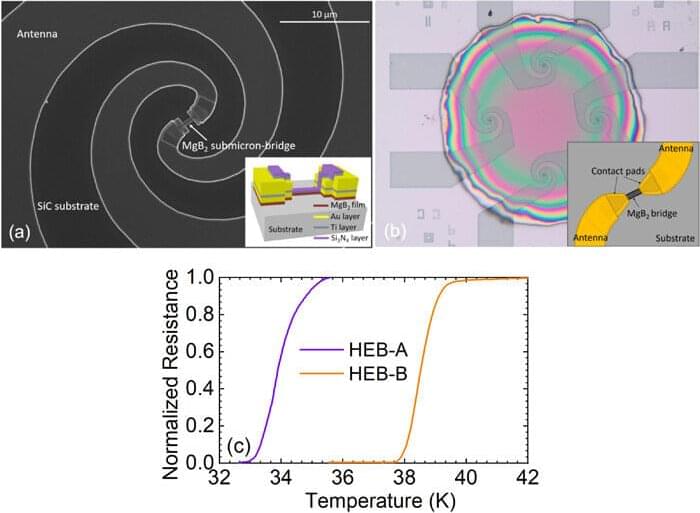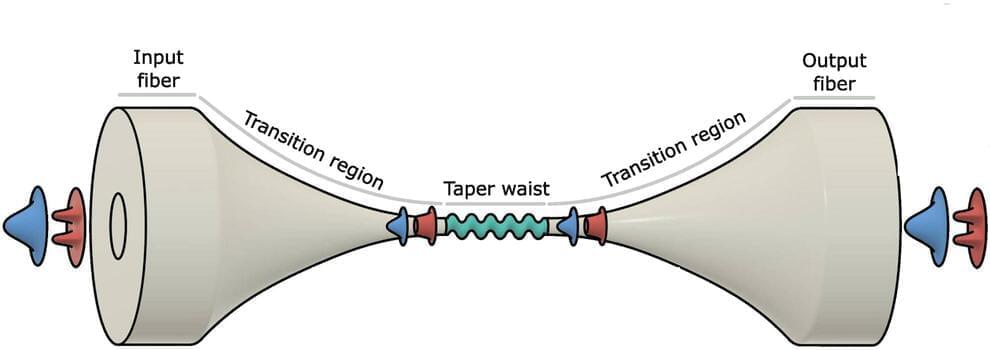A DIY hacker equipped with a Flipper Zero and old security camera managed to build a Mobile Infrared Trasmitter to bypass red lights.
Get the latest international news and world events from around the world.
The Genes We Lost Along the Way
PBS Member Stations rely on viewers like you. To support your local station, go to http://to.pbs.org/DonateEons.
↓ More info below ↓
Our DNA holds thousands of dead genes and we’ve only just begun to unravel their stories. But one thing is already clear: we’re not just defined by the genes that we’ve gained over the course of our evolution, but also by the genes that we’ve lost along the way.
Thanks to these illustrators for their wonderful hominin illustrations featured throughout this episode!
Julio Lacerda: https://twitter.com/JulioTheArtist.
Fabrizio de Rossi: https://www.facebook.com/ArtofFabricious/
Jack Byrley: https://twitter.com/bedupolker.
This video features this Paleogeographic Map: Scotese, C.R., 2019. Plate Tectonics, Paleogeography, and Ice Ages, YouTube video: https://youtu.be/UevnAq1MTVA.
Produced in collaboration with PBS Digital Studios: http://youtube.com/pbsdigitalstudios.
Super special thanks to the following Patreon patrons for helping make Eons possible:
Mark Talbott-Williams, Elizabeth Baker, Jake Myers, BuddyTheOtter, The Dec of Cards, Eddy, Andrii Makukha, Angel Alchin, Julie Cohen, salsablog.band, Michael Hof, simon read, Sean C. Kennedy, Eric Roberto Rodriguez, Hillary Ryde-Collins, Facts Dinosaurs, Frida, YaBoiSam36, Matthew Donnelly, Yu Mei, Colleen Troussel, Dan Ritter, faxo, Jayme Coyle, Gary Walker, Amanda Straw, Stephanie Tan, Laura Sanborn, Minyuan Li, Ben Cooper, Leonid, Robert Noah, Matt Parker, Heathe Kyle Yeakley, Jerrit Erickson, Anton Bryl, MissyElliottSmith, Zachary Spencer, Stefan Weber, Andrey, Ilya Murashov, Merri Snaidman, Gabriel Cortez, Marcus Lejon, Robert Arévalo, Todd Dittman, Betsy Radley, Anthony Callaghan, Philip Slingerland, John Vanek, Eric Vonk, Henrik Peteri, Jon Monteiro, James Bording, Miles Chaston, Michael McClellan, Jeff Graham, Maria Humphrey, Daisuke Goto, Gregory Kintz, Chandler Bass, Tsee Lee, Robert Hill.
If you’d like to support the channel, head over to http://patreon.com/eons and pledge for some cool rewards!
AI and the Transformation of the Human Spirit
A second problem is the risk of technological job loss. This is not a new worry; people have been complaining about it since the loom, and the arguments surrounding it have become stylized: critics are Luddites who hate progress. Whither the chandlers, the lamplighters, the hansom cabbies? When technology closes one door, it opens another, and the flow of human energy and talent is simply redirected. As Joseph Schumpeter famously said, it is all just part of the creative destruction of capitalism. Even the looming prospect of self-driving trucks putting 3.5 million US truck drivers out of a job is business as usual. Unemployed truckers can just learn to code instead, right?
Those familiar replies make sense only if there are always things left for people to do, jobs that can’t be automated or done by computers. Now AI is coming for the knowledge economy as well, and the domain of humans-only jobs is dwindling absolutely, not merely morphing into something new. The truckers can learn to code, and when AI takes that over, coders can… do something or other. On the other hand, while technological unemployment may be long-term, its problematicity might be short-term. If our AI future is genuinely as unpredictable and as revolutionary as I suspect, then even the sort of economic system we will have in that future is unknown.
A third problem is the threat of student dishonesty. During a conversation about GPT-3, a math professor told me “welcome to my world.” Mathematicians have long fought a losing battle against tools like Photomath, which allows students to snap a photo of their homework and then instantly solves it for them, showing all the needed steps. Now AI has come for the humanities and indeed for everyone. I have seen many university faculty insist that AI surely could not respond to their hyper-specific writing prompts, or assert that at best an AI could only write a barely passing paper, or appeal to this or that software that claims to spot AI products. Other researchers are trying to develop encrypted watermarks to identify AI output. All of this desperate optimism smacks of nothing more than the first stage of grief: denial.


New multi-policy-based annealer for solving real-world combinatorial optimization problems
A fully-connected annealer extendable to a multi-chip system and featuring a multi-policy mechanism has been designed by Tokyo Tech researchers to solve a broad class of combinatorial optimization (CO) problems relevant to real-world scenarios quickly and efficiently. Named Amorphica, the annealer has the ability to fine-tune parameters according to a specific target CO problem and has potential applications in logistics, finance, machine learning, and so on.
The modern world has grown accustomed to an efficient delivery of goods right at our doorsteps. But did you know that realizing such an efficiency requires solving a mathematical problem, namely what is the best possible route between all the destinations? Known as the “traveling salesman problem,” this belongs to a class of mathematical problems known as “combinatorial optimization” (CO) problems.
As the number of destinations increases, the number of possible routes grows exponentially, and a brute force method based on exhaustive search for the best route becomes impractical. Instead, an approach called “annealing computation” is adopted to find the best route quickly without an exhaustive search.

New type of bolometer detector for far-infrared telescopes
To study how stars and planets are born we have to look at star cradles hidden in cool clouds of dust. Far-infrared telescopes are able to pierce through those clouds. Conventionally, niobium nitride bolometers are used as the detectors, despite their low operating temperature of 4 Kelvin (−269° Celsius).
Now Yuner Gan (SRON/RUG), together with a team of scientists at SRON, TU Delft, Chalmers University and RUG, has developed a new type of bolometer, made of magnesium diboride, with an operating temperature of 20 Kelvin or above. This can significantly reduce the cost, complexity, weight and volume of the space instruments.
Conventional, superconducting niobium nitride (NbN) hot electron bolometers (HEBs) are so far the most sensitive heterodyne detectors for high-resolution spectroscopy at far-infrared frequencies. Heterodyne detectors take advantage of a local oscillator to convert a terahertz line into a gigahertz line.

Tapered optical fiber addresses challenge posed by Brillouin scattering
When optical beams, consisting of photons, travel through fibers, they cause vibrations that generate acoustic waves, consisting of phonons. The phenomenon, called Brillouin scattering, has been harnessed by researchers to optomechanically “couple” acoustic waves with light waves. This coupling allows information carried by photons to be transduced, or converted, to the phonons, which travel nearly a million times more slowly than light waves.
Opto-acoustic coupling has enabled researchers to read and manipulate the transduced information more easily. To date, however, many of the Brillouin scattering techniques researchers have used rely on standard fiber geometries that cause acoustic waves to die out quickly, limiting the efficacy of the coupling.
Now, using an optical fiber with a micron-sized waist, University of Rochester researchers have demonstrated how to couple propagating optical waves and long-lived acoustic waves, with strong optical-acoustic interactions.

Scientists observe high-speed star formation
Gas clouds in the Cygnus X Region, a region where stars form, are composed of a dense core of molecular hydrogen (H2) and an atomic shell. These ensembles of clouds interact with each other dynamically in order to quickly form new stars. That is the result of observations conducted by an international team led by scientists at the University of Cologne’s Institute of Astrophysics and at the University of Maryland.
Until now, it was unclear how this process precisely unfolds. The Cygnus X region is a vast luminous cloud of gas and dust approximately 5,000 light years from Earth. Using observations of spectral lines of ionized carbon (CII), the scientists showed that the clouds have formed there over several million years, which is a fast process by astronomical standards. The results of the study, “Ionized carbon as a tracer for the assembly of interstellar clouds,” will appear in the next issue of Nature Astronomy.
The observations were carried out in an international project led by Dr. Nicola Schneider at the University of Cologne and Prof Alexander Tielens at the University of Maryland as part of the FEEDBACK program on board the flying observatory SOFIA (Stratospheric Observatory for Infrared Astronomy). The new findings modify previous perceptions that this specific process of star formation is quasi-static and quite slow. The dynamic formation process now observed would also explain the formation of particularly massive stars.

U.S. and China diplomats communicating — but not militaries, White House says
WASHINGTON, Feb 17 (Reuters) — U.S. diplomatic communications with China remain open after the shooting down of a Chinese spy balloon this month, but contact between the countries’ militaries “unfortunately” remains shut down, the White House said on Friday.
White House National Security Council spokesman John Kirby also said it was not the “right time” for Secretary of State Antony Blinken to travel to China after he postponed a Feb. 5–6 trip over the balloon episode, but President Joe Biden wanted to speak to Chinese President Xi Jinping when it was “appropriate.”
Kirby told a White House news briefing that U.S. and Chinese diplomats can still communicate despite tensions over the balloon incident.
Weekly Piece of Future #3
Welcome to the first issue of Rushing Robotics with brief overviews of each section.